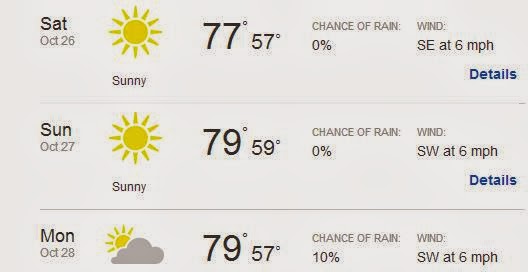With a week to race time, I will start tapering. I have a couple of weekend workouts planned but they will be mostly low intensity. Saturday will be a 6-8 mile run. I'll probably throw in a "race pace" mile or two, but I'll mostly be running at a slower pace, just trying to stay loose. Sunday afternoon it looks like warmer weather will prevail so I'm planning on heading out to the test track for one last ride on my boy "Blue." I don't plan on riding more than about 30 miles, and I'll be shooting for a ride near race pace. Last weekend I acquired a "pointy helmet" off of e-bay for about $30, so I want to try it out before the race to be sure it is comfortable enough and there are no concerns. As the old adage goes "Nothing new on race day."
 |
| Note: The graphics only add .000222dbu's* of drag (dbu- douchebag units) |
Race week preparations: There's a lot to do here. Everything from getting the car cleaned up, to booking a room for the night we are traveling, to making sure that I have a variety of gear for different conditions. The last thing I want to be doing while in Austin is shopping for things that I've forgotten. Right now the weather forecast for next weekend looks quite warm with a high of 79 on Sunday. There's a lot of time between now and then however, so things could certainly change one way or the other. Still, barring a surprise cold front, it looks like the safe bet is probably on the weather being warmer rather than cooler.
Sunday:
- Ride 30-34 miles in "triathlon" mode aiming for some of the ride at estimated race pace (19-20 mph).
- Begin gathering bike items in a central location to make packing easier.
Formulate menu of "healthy" eating for the next several days.(done)- Vacuum and clean inside of car
- Gather Run items including shoes, visor, hat, arm warmers, gloves, socks, extra socks, etc.
- Book Hotel Room for overnight on Thursday
- Swim Tuesday morning: 800-1000 meters with emphasis on quick turnover of arms, high elbows, and sighting. Nice, easy pace with a few fast ones thrown in here and there.
- Gather swim items including extra cap, wet suit, garbage bag (for storage), goggles, anti-fog, transition towels, etc.
- Check to make sure all items for trip are clean.
- Complete any last minute shopping/ nutrition items.
- Clean bike and pack bike items including tools, extra cleats, pump, lubricants, tire patching items, extra tubes, helmets, shoes, sunglasses, gloves, water bottles. nutrition, etc.
- Fuel vehicle
- Pack "civilian" clothes for trip
- I pod, Chargers, etc. are ready
- Pack Vehicle (depart by 4:15 p.m.)
The Race: Since this will be my second and last race of the season, I'd like to turn in as good of a performance as possible. The sunset triathlon at the end of August gave me some idea of where I'm at, but since then, I've definitely put some more miles in and tried to build up my endurance a bit without sacrificing a few speed workouts. At this point, I feel like I have a decent idea of how I might do in each discipline. The trick will be putting them all together. I like to have several possible scenarios in mind as this allows me to adjust my goals depending on course conditions and my performance throughout the event . At HITS, the scorching weather wound up having a huge impact on my overall time, so only an "average" performance comes close to that. In the last 15 months, I've really tried to increase my overall "base" so I feel like I should be a bit more comfortable going faster for a little longer.
Epic
|
Great
|
Good
|
Average
|
|
Swim
|
36:00
|
38:00
|
40:00
|
42:00
|
Transition One
|
2:00
|
3:00
|
4:00
|
5:00
|
Bike
|
2:45:00
|
2:50:00
|
3:00:00
|
3:07:00
|
Transition Two
|
2:00
|
3:00
|
4:00
|
5:00
|
Run
|
1:45:00
|
1:50:00
|
1:55:00
|
2:00:00
|
TOTAL
|
5:10:00
|
5:24:00
|
5:43:00
|
5:59:00
|
Race Focus: There are some key things to remember in order to execute and achieve a race that is somewhere between "good" and "epic." Unlike a sprint or an olympic distance triathlon where you pretty much go all out from the beginning, the half-ironman requires a steady release of effort/ exertion over several hours. A key to success is not getting "caught up in the moment," and remembering that the race will play out over the course of several hours. This will be particularly important at the onset of the swim, bike, and run, where it can be easy to go out too fast. Having a feel for how fast/ slow you are racing is key to keeping things in check.
Without a doubt, Austin will be the biggest race I've done by a factor of about 4 or 5 times. I don't really know a way to prepare for that fact, other than to recognize that there will be more people than ever, and you'll have to negotiate that as best as possible.
Nutrition is sometimes considered the "fourth discipline" in triathlon and many athletes spend a great deal of time figuring out a nutrition plan that works for them. I've always sought to work on a nutrition plan that is versatile. In other words, I hope to have a strong enough stomach that I can take advantage of whatever nutrition is available, and be flexible enough to try something different if necessary. The simpler, the better is my motto. At HITS Sterling I struggled a bit with nutrition and had a few moments of nausea on the bike. When I hit the run I wound up discovering "Coke" as a great way to settle the stomach and gain some energy back. Last winter while ultra training, I worked on building my aerobic/ metabolic efficiency (I won't go into great detail but I got much better at converting stored fat to energy instead of glycogen) which seems to reduce the amount of nutrition I need during races. I will still need to use a combination of energy drinks and gels given the length of the event. I plan on taking on a few more gels during the bike ride to see if that will help maintain my energy level once I hit the run.
Staying as "hydrated" and "cool" as possible are the final keys to a successful race. Although the race is taking place at the end of October, the forecast looks fairly warm, and high humidity will be a new factor to take into account. No doubt that a hot race will impact performance, so the only thing to do will to be to keep keep trying.
The Swim: In the pool, I've had a great year of swimming. This past month I've hit the pool a couple of times a week and I've been able to be a bit faster over longer sets. However, there's a big difference between swimming laps in a pool and doing 1.2 miles in an OWS. During the summer the closest OWS are about 2 hours from home and as a result, I've only done two OWS this year. I'm not going to worry about having a PR on the swim. My goal will be to have a decent swim and to come out of the water feeling like I have a lot of energy left for the ride. From the start I'm going to focus on a steady swim, trying to stay relaxed, breathe regularly and fall into a steady rhythm. The swim is done in a counter clockwise direction which is also my preference as I seem to have an easier time sighting and staying on course.
The Bike: I've put more work into the bike this year than ever before. Not just in terms of miles ridden, but also in terms of challenging myself to push through and ride more aggressively. I hope that these efforts will pay off in Austin. At HITS Sterling I averaged 18.1 mph on my road bike. At the Sunset Triathlon I averaged 21.2 mph on the tri bike. Next weekend I hope to be somewhere between the two with an average somewhere between 19-20 mph. At that pace, I should be able to ride a little under three hours and still have energy left for a decent run.
The Run: The run course at Austin consists of three laps each of which must be around 4.6 miles. At a pace somewhere between 8:30-8:45/ mile, I should complete each lap in 36-38 minutes to have a "great" race. The biggest factors could be the heat/humidity and how tired I am after the swim and bike portions. I plan on starting slightly slower than my planned pace during the first mile just to get acclimated. If I feel strong after the first two laps, I give myself permission to open it up on the last lap and see what I can do. Don't want to be leaving anything out on the course. I'm excited to experience the finish which actually takes place indoors.
Transitions: There are separate T1/T2 areas for this event which will be quite interesting. That said, the basic process will be the same for each:
T1: Enter with wetsuit halfway off and goggles/ cap tucked in sleeve. Quickly step out of suit by stepping on the top of the suit and pulling legs off. Shoes on (socks if it's a chilly day). Helmet on, sunglasses on, and bike maintenance kit (these are in the helmet) stowed in pocket. Head out to bike course.
T2: Rack bike. Slip out of shoes just before dismount. Helmet off and on bars (place bike maintenance inside of helmet). Socks and Shoes on. Helmet on and grab race belt. Pause to make sure I have everything. If it's hot, use a water bottle to start cooling.
It has been nearly a year since I signed up for this race and so it's hard to believe it is now only a week away. Should be a great way to wind up the season.




















